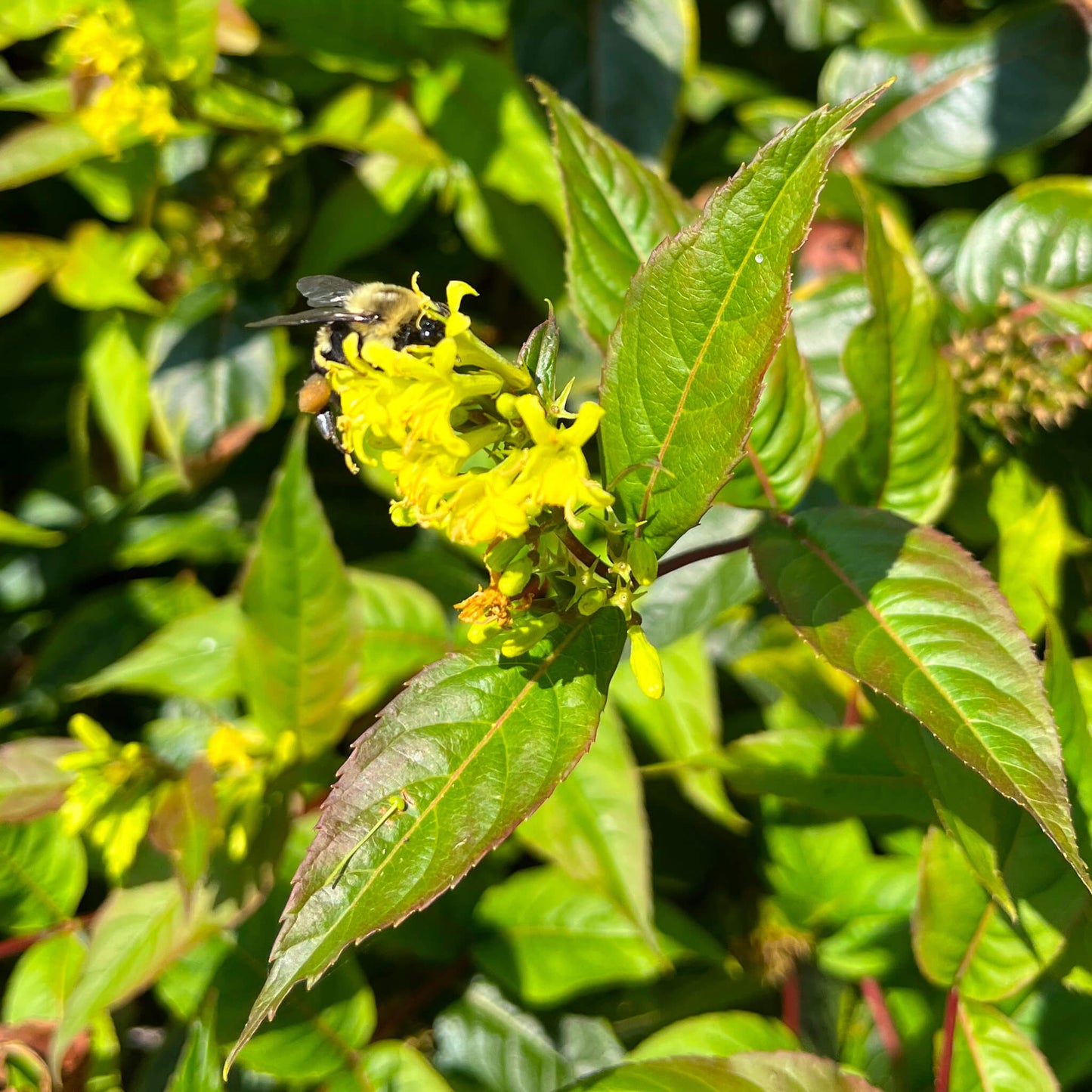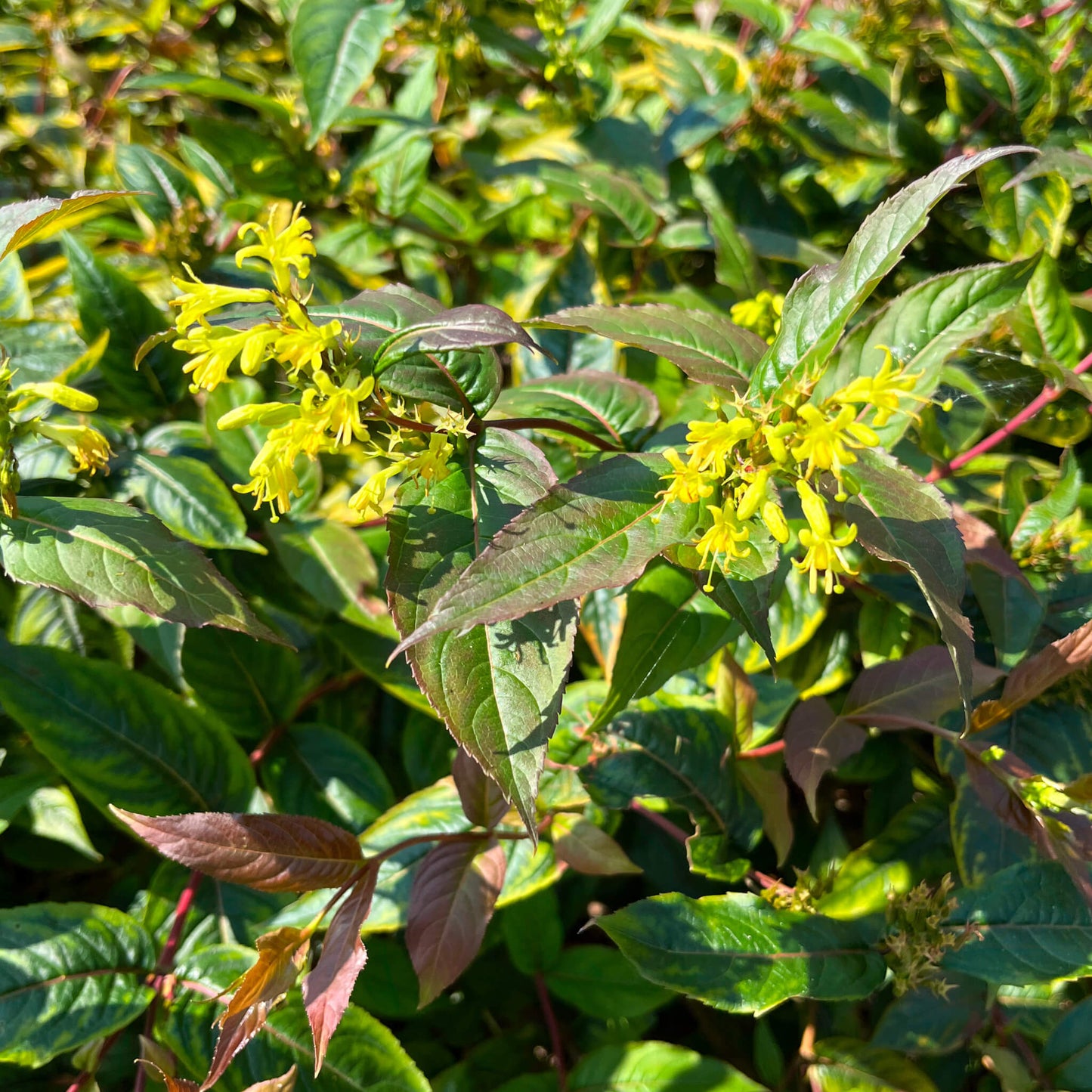This site is protected by hCaptcha and the hCaptcha Privacy Policy and Terms of Service apply.
For successful seedlings,
see the growing notes at the bottom of the page!
Northern bush honeysuckle (Diervilla lonicera) is a small to medium-sized shrub, typically growing up to 60 centimetres tall. It is valued for its oval green leaves, which often turn reddish in the fall, adding seasonal interest to gardens. From late spring to summer, this shrub produces charming trumpet-shaped, yellow flowers that attract numerous pollinators like bees, butterflies, and other beneficial insects. Additionally, it serves as a host plant for certain species of butterflies and moths. Northern bush honeysuckle is ideal for stabilizing soils on slopes or along riverbanks, helping to prevent erosion.
Its rustic and natural appearance makes it an excellent choice for hedges, borders, or low-maintenance gardens. This shrub easily adapts to a variety of soil conditions, whether poor, rocky, or well-drained, and tolerates both full sun and partial shade. Its small size and tolerance for pruning make it perfect for smaller spaces.
Ecological Roles
Northern bush honeysuckle is extremely beneficial for local ecosystems, providing nectar for bees, butterflies, and other pollinators during its flowering season. It also serves as a host plant for certain butterfly and moth species, supporting local biodiversity. Thanks to its robust root system, this shrub helps stabilize soil, making it particularly useful in areas prone to erosion, such as slopes or riverbanks.
Additionally, northern bush honeysuckle is resistant to pests and diseases, making it a great choice for gardeners seeking a low-maintenance and durable plant. Its attractive foliage, which changes colour in the fall, and bright yellow flowers provide seasonal beauty to any outdoor space while offering valuable support to pollinators.
Akène cannot assume any responsibility for the use of plants for therapeutic purposes. Always seek advice from a professional before using a medicinal or edible plant.
Sowing and Growing
Technical Details
Seeds per packet: 200
Family: Diervillaceae
Scientific name: Diervilla lonicera
Life cycle: Perennial
Hardiness zone: 3
Soil type: Sandy to silty
Soil moisture level: Dry to medium
Soil - additional attributes: Well-drained
Light: Sun, partial shade, shade
Blooming: June to July
Spacing: 70 cm
Height: 60 cm
Deer resistance: High
Stratification: Optional but beneficial
Scarification: No
Germination time: 10 to 25 days
Sowing depth: Surface

